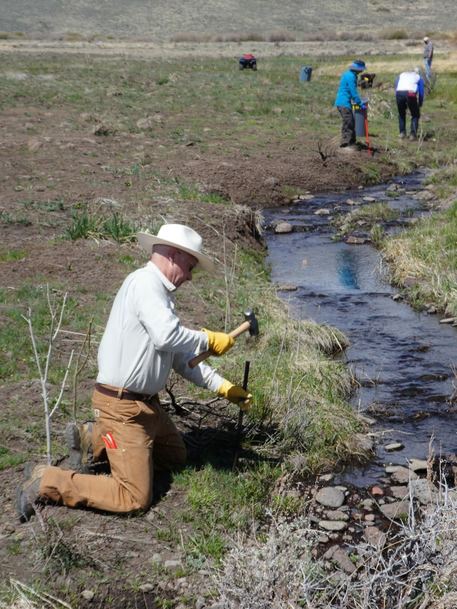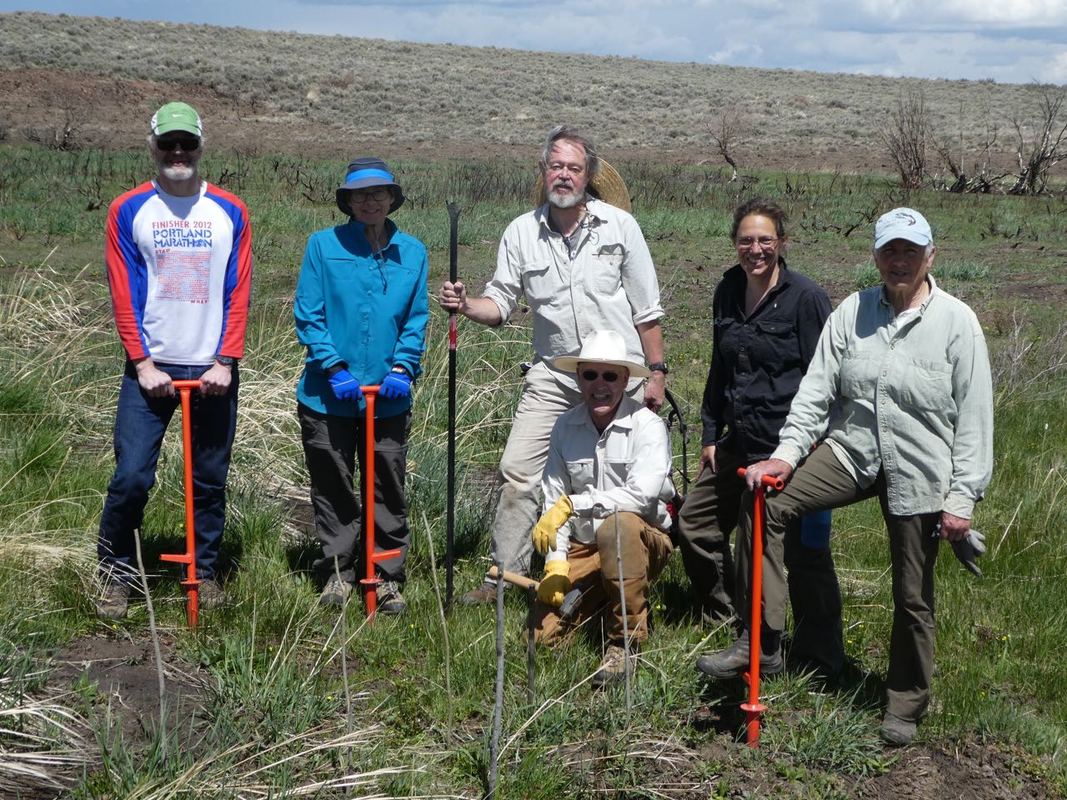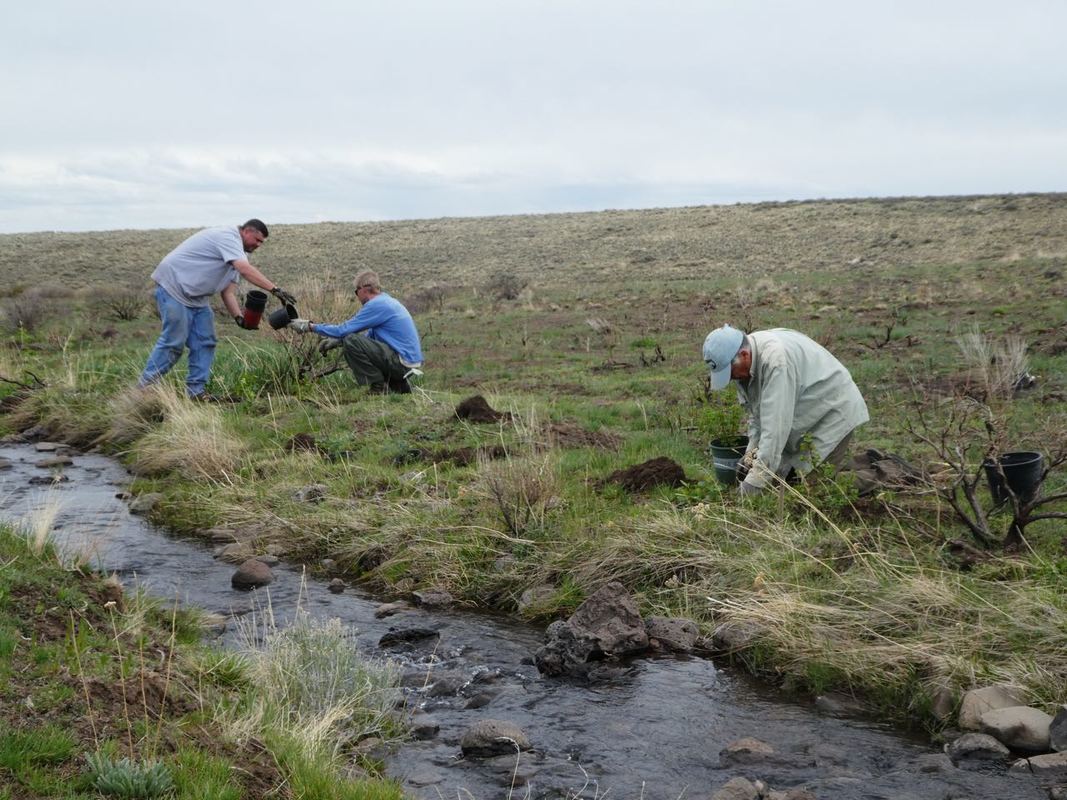Friends Turn Out to Restore Willow Creek Riparian Area
In late morning of July 11, 2017, a flare dropped by an Oregon Air National Guard F-15 ignited a wildfire along Willow Creek in sight of the Hart Mountain Refuge headquarters. By the time it was extinguished, the fire had blackened 488 acres of core nesting and brood-rearing ground for Sage-grouse leks. It also destroyed a significant amount of willow and shrub cover that formed habitat for the Catlow Valley redband trout, a genetically distinct population of the Great Basin redband trout. This trout is a Federal “Species of Concern” and is listed by Oregon Fish and Wildlife Department as “Sensitive Critical.”

On the weekend of May 5 and 6, five members of the Friends of Hart Mountain joined refuge staff for restoration work on the destroyed habitat. Beginning Saturday morning, the group cut willow whips from along the creek near the burn site. Cuttings were carried back to headquarters where they were trimmed to thirty-inch lengths and placed in water to soak overnight. The result was about 400 cuttings of four different species of willow. Following lunch, the group planted shrubs, including currants, dogwood, snowberries and roses. Natural currants and roses could also be seen returning to the burned area. Ironically, as the Friends were working, an F-15 overflew the site and dropped several flares. None reached the ground.
Sunday morning all the willow slips were planted along the stream bank in soil that ranged from garden friable into which the cuttings could be inserted by hand to stony creek bank that required a few blows of the point of a 17 lb breaker bar to make a hole. The group’s efforts were inspected by a six-inch trout that came down the stream to watch. In the afternoon the Friends planted more shrubs; refuge staff completed the work on Monday with the plants that couldn’t be fit into the cart the previous day. Altogether 75 Red Osier dogwoods, 50 Mountain snowberries, 75 Wood’s roses, 100 Wax currants and 26 Golden currants were planted.
The point of riparian restoration is not simply to plant a bunch of willows and native shrubs. The goal is for what has been planted to grow and spread. A return visit to the site a month after the planting offered hope on two counts. First, a rough estimate of what had been planted suggested that at least two thirds had survive. This is an encouraging result, but final judgment must await a more scientific evaluation in the Fall. Second, a surprising number of the original plants that had been thought to be destroyed were making a vigorous recovery–especially currants and roses. This augurs well for a rapid recovery. It is also further evidence of importance of volunteers to the conservation of our public lands.
Stay tuned for more volunteer opportunities and events to be held later this year!


